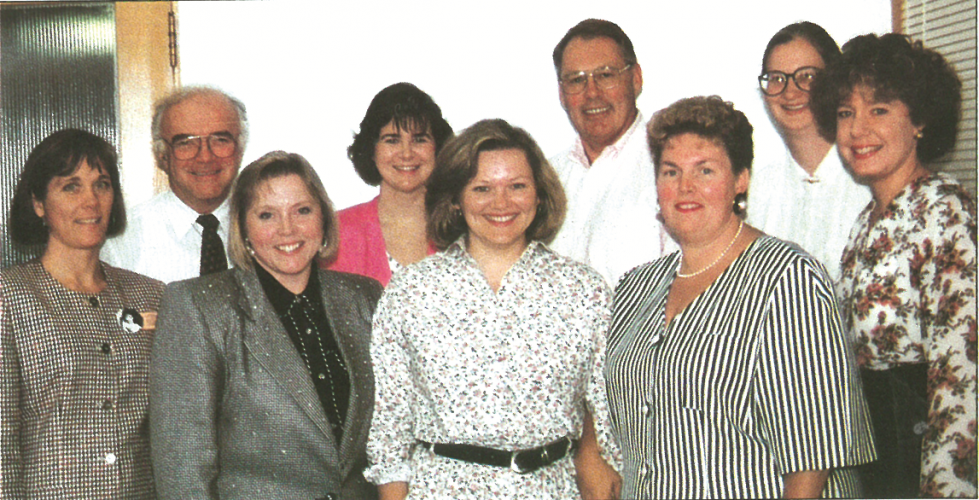
When The Registered Nurse was re-envisioned in 1989, the member communications cluster – a group specifically created to shape and direct RNAO communication with its members – decided to shift from a members-only publication – focused on RNAO issues – to a publication that addressed a broad range of nursing roles and workplace issues. The circulation jumped to 80,000 working nurses in an effort to attract new RNAO members. By 1991, the cost to produce and distribute the magazine became too expensive, and the association went back to its focus on member issues, and its circulation of 16,000 members, plus 10,000 non-members. The external publishing company enlisted to produce the magazine worked in close partnership with a core group of editorial advisors at RNAO (above). Today, this group is known as the editorial advisory committee, and although the committee members have changed, the mandate has not. The group still plays an important role in critiquing each issue and providing valuable input for future issues.
The editorial advisors of the early 1990s stayed true to the vision that the magazine would include more content from members. The RNAO News section was created as a standing feature that could be pulled out of each issue and hung on workplace bulletin boards. This section included chapter and interest group news, details on professional development opportunities, local events, volunteer opportunities, surveys, meeting updates, event listings, news on meetings with politicians, obituaries, and much more.
Outside of the bite-sized bits of information in this pull-out section, the magazine’s content focused primarily on research, education, administration, and practice issues. There were more reference lists, notes and suggested readings than there were photos, although we started to see the inclusion of more colour images when they did appear.
There was a legal issues section published on a regular basis, as well as the new Portrait of Leadership feature, which profiled legends in nursing. These included the likes of Florence Nightingale, Jean Gunn, Florence Emory, Sister Mary Jones, Isabel A. Hampton Robb, and Elisabeth McMaster.
Rounding out each issue were feature articles that touched on broader topics such as violence against nurses, liability protection, public health and safety priorities like helmet safety, and even the odd How-To article, in one case about planning an all-candidates meeting or debate. It’s hard not to notice that much of this content is still relevant today.
Watch our next issue for more highlights from the 1990s.
In pictures…
Magazine photography has advanced by leaps and bounds over the last 20 years. Images in print may have been limited in the 1990s, but here are a few that stood out…
RNJ ACCESS
You are only one quick step away from full access to all RNJ content.
Already an RNAO member? Log in
